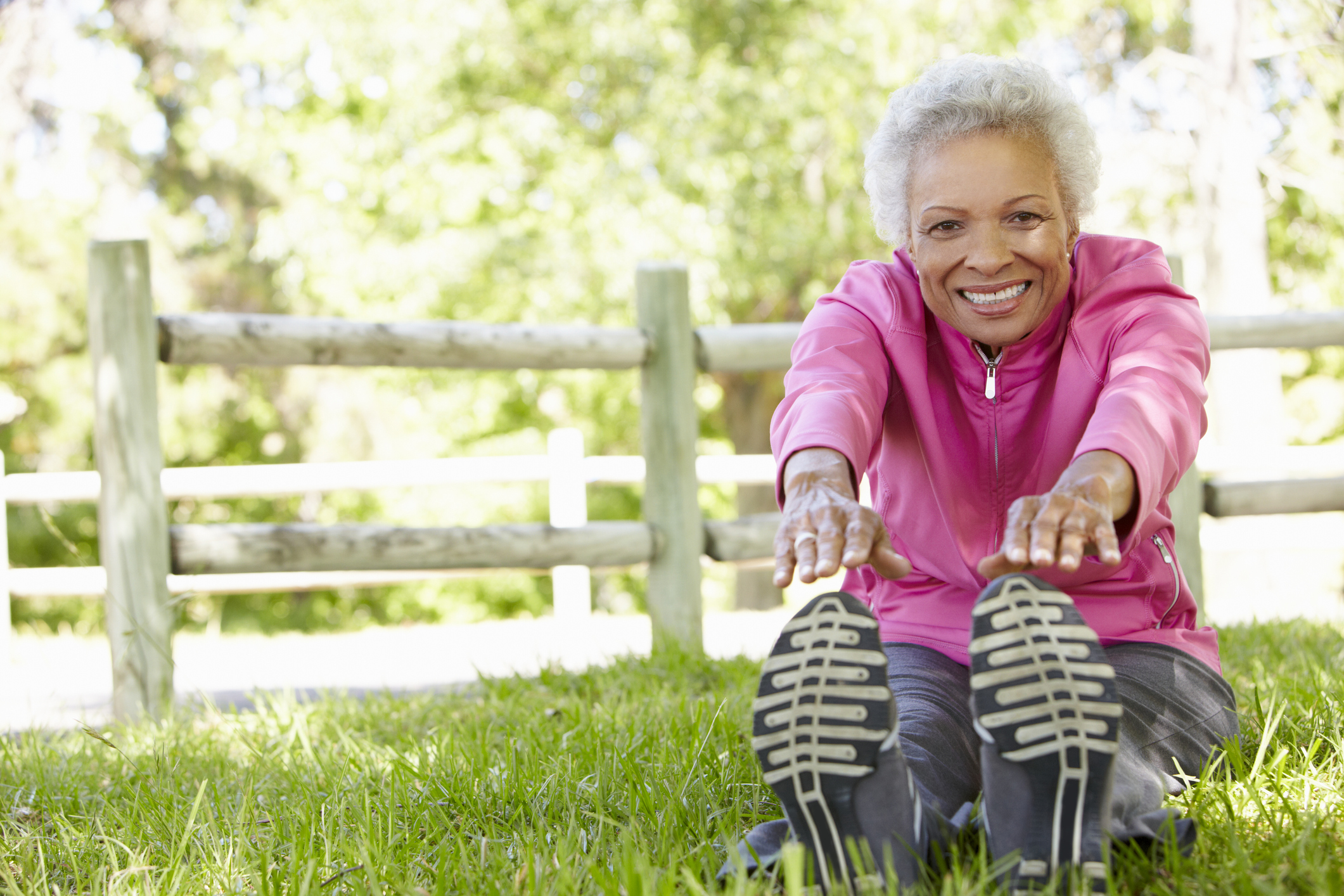If the weekend has included end-of-season garden clean-up, snow removal, or early holiday decorating, this morning may have greeted you with a few stiff or sore muscles. Before starting your next activity, 15 minutes of stretching can not only reduce the risk for injury, but it can also improve flexibility, mobility and posture.
According to a recent Insider Health report, maintaining flexibility keeps joints and tissues healthy. If the tissue around a joint becomes stiff, the muscle may fatigue and tighten, increasing the risk for injuries such as muscle strains or ligament tears. Dynamic stretching, moving the joint through its full range of motion several times without holding a position, has been found through research to improve flexibility and decrease stiffness. The improvement in flexibility among study participants was reported to last up to 90 minutes following stretching.
Stretching also helps to preserve range of motion which enables older adults to maintain physical function in daily activities as well as the ability to participate in more rigorous athletics such as hiking, cycling, kayaking or swimming. Flexibility starts to diminish naturally around age 30 to 40, but by including stretching in your daily exercise routine, joint mobility can be preserved helping older adults stay active and injury-free.
Dynamic, rather than traditional static stretching in which each pose is held for a certain length of time before repeating, has been found to be more beneficial in helping loosen up muscles and tissues prior to exercise. In addition to helping to prevent injury, stretching can also significantly reduce low back pain.
With all the time people are spending in front of a computer screen these days, stretching can help improve posture and neck or back pain caused by slouching. It’s also helpful in easing anxiety and reducing stress. Setting aside time each day to breathe deeply, stretch out stiff and achy joints and take a break from devices has also been found to improve sleep.
Stretching should never be painful; moving though the range of motion of the shoulders, neck, lower back, hips, legs and ankles should be done gently. Don’t push past the point of discomfort; experts advise to only practice static stretching after muscles have warmed up first with dynamic range of motion stretches.
Not sure how to start a stretching practice? Follow this link to a recent Silver Sneakers blog post: “7 Simple Stretches for Older Adults”.






Add Your Voice
0 Comments
Join the Discussion